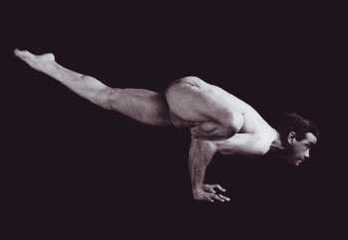
15 May Karma and Reincarnation!
Karma and Reincarnation is a topic that comes up often in the world of yoga. Both Hinduism and Buddhism are strong believers and enforcers of this concept and for very good reasons too. Whether you believe in karma and reincarnation or not, it’s still a subject worth exploring and delving deep into before completing shutting that door close. So, what is karma and what is reincarnation? Karma is derived from the Sanskrit root “Kr” which means to do or act. The word karma literally means “action”. Every action we take in this life, our past and future lives is our karma. “Punya (meritorious) deeds lead to punya (merit) while evil deeds lead to further evil (pap).” – Bruhadaranyaka Upanishad 3/2/13. Any activity that a jiva (self) performs with the body, senses and mind is karma. The principle of karma states that for every deed performed by a person, there is a resultant fruit which is good or bad depending on the nature of the deed. Auspicious karmas yield good fruits and bad karmas result in bad fruits. The fruits can be either instant or ripen with time to be borne out later. The law of karma says that the ultimate responsibility for our life and happiness rests with us. We cannot blame anyone else for what we are experiencing today. Our actions past and present create situations that we have to face through the journey of our life. There are 3 types of karma; 1) Sanchit Karma – those that are stored in the stock of karmas that do not give instant fruits and need time to ripen. 2) Prarabdha Karma – these karmas have ripened from the huge sanchit pool that contribute towards the formation of the present body contributing towards the destiny of the jiva. 3)Kriyaman Karmas are the ones performed every day in the present birth. When we relate to our karma we realise that this birth is only a small part of the whole, because this life is only one of a multitude of lives. At the time of birth when the umbilical cord gets cut the mind forgets this but retains it in the subconscious. Belief in the principle of karma provides comfort during periods of crises and painful events. It helps us to refrain from performing undesirable deeds and inspires us to perform auspicious deeds. The principle of Karma dispenses true justice. Reincarnation is often referred to like this; “As a man discards worn-out clothes and wears new ones, similarly, the embodied jiva, discards worn-out bodies and enters new ones”. – Bhagavad Gita 2/22. The principle of reincarnation (punarjanma) is one of four foundational principles of Sanatan Dharma. This principle is intricately linked with the principle of karma. Both work in unison. One cannot be understood without accepting the other. Death is the forsaking of the present body by the jiva. Birth is adopting a new body according to the karmas ripened from the sanchit pool. This is commonly known as rebirth. Gautam Buddha recounted 550 stories of his previous births in the Jataka Kathas. Tibetan Buddhism believes that the highest lamas reincarnate to help mankind. The Dalai Lama is one of them. One takes birth in a meritful or unmeritful place and body according to one’s karmas. As his karmas and actions, so his next birth. By pious karmas he becomes pious. By evil karmas he becomes evil. Life on Earth is varied and complex. We saw this while discussing karma. If upon the birth of a person this is one’s 1st birth, then why is one person happy and another miserable? Without accepting reincarnation, there can be no logical and satisfactory explanation! One remains optimistic to live the best possible life or perform endeavours for moksha (liberation). One develops tolerance and affection for every living creature! To regard all creatures as one regards oneself. This principle is therefore a necessity for the liberation and benediction of man, society and all life on Earth! You can research nowadays through the internet and countless stories of those who have regressed into their past lives. Very fascinating indeed!
Asana of the week: Eka Pada Galavasana (Flying Pigeon) & Vatayanasana (Horse pose).
One is an arm balance where the shin runs across the chest curling the toes around the upper arm, which is in Chaturanga, the other is a knee balance on an ardha padmasan leg, with the opposite leg out at 45 degrees in Garudasana (eagle) arms. Both very strengthening poses that require sheer focus and determination, hence why they are in the 2nd and 3rd series of Ashtanga! I chose these 2 poses for this week’s focus because I would like my students to imagine flying through their karmas with one foot here and the other foot in akash (space) just like being in 2 worlds at the same time. Vatayanasana, I admire horses and their smart intellect and how they always assist humans allowing us to ride on their backs for pleasure and in the ancient times for traveling. Though horses were not the only ones that aided humans to relocate etc… they never the less are special and super powered. All animals are yes… but this week we will give credit to the horses!
Mantra: Tat Tvam Asi: That Thou Art.
This is similar to Tat Sat Om (I am that).. however, the mantra Tat Tvam Asi is derived from the Chandogya Upanishad and is tying in nicely to this weeks theme of Karma and Reincarnation. Allow yourself to be in all beings. Allow yourself to be everywhere and in everything.
Happy Living Yogi’s from across the Globe. Be kind and generous in all your endevours and remember Karma is a ….!


